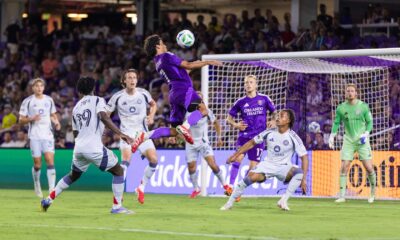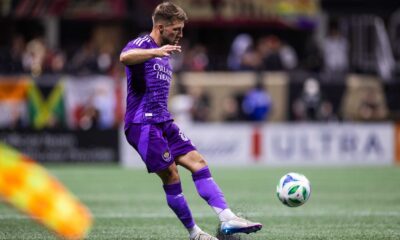Orlando City
Orlando City vs. D.C. United: Player Grades and Man of the Match

Well, that was a fun win and I’m sure we’d all like to see a lot more of that next season. Orlando City possessed the ball in the attacking half, created many good scoring chances and finished plenty of them in a 4-2 win over D.C. United on Decision Day. And it could have been even more lopsided than that, as Kevin Molino hit a post and missed a header just wide, and Carlos Rivas whiffed on a half volley try with an empty net to shoot at.
Still, it was an outstanding result and the Lions finish the season feeling good after beating two playoff teams in the final two matches of the season by a combined 6-2 score. Now begins the process of Jason Kreis molding this team into what he wants it to become.
But first, let’s give out our final match grades for 2016.
Starters
GK, Joe Bendik, 5.5 – With only three shots on target and two goals allowed, this would usually not be a very good grade. However, Joe had zero chance on the first goal, which came off essentially a two-on-nobody after perhaps the worst back pass in Orlando City history (more on that later). Kennedy Igboananike’s goal was a freaking rocket and also didn’t allow Bendik much of a chance to stop it. Ultimately, United wasn’t a very dangerous team overall in this game and Joe didn’t have much of a chance to show his stuff, for either good or bad.
D, Mikey Ambrose, 6 – A solid day for Mikey, in my opinion, with one chance created and a lot of creativity shown in his combination play up the left side with Kaká and others. His 71.7% passing rate could have been better, and he had no accurate crosses on four attempts and only one accurate long ball out of five. He also forced Seb Hines to cover a lot of ground early in the game as he got caught upfield a couple of times. Still, there were way more positives than negatives and he has a lot of upside. Finished with a tackle, a clearance, and two interceptions.
D, Seb Hines, 4 – Folks will point a lot of fingers at Seb after this game, and rightfully so when you consider the world’s softest back pass that was nominally intended for Joe Bendik but essentially gave United its first real lifeline in the game. Hines started the game wobbly, but had to cover a lot of space (see above review for Ambrose). Defensively, which is the primary job he has, Hines did OK. He had two clearances, two interceptions, and one tackle. He gave away a free kick early with a clumsy foul, though. He and Jose Aja did a nice job of moving the ball and keeping Orlando from being penned into their own end.
D, Jose Aja, 7 – On a team-high (tied with Hines) passing attempts, Jose completed 83.6% and won nearly everything in the air. He led the team in touches (76), interceptions (3), and clearances (3) and tied Cristian Higuita for the most tackles (4). His towering headers turned balls into the Orlando box into throw-ins for the opposition. He had only one nervy giveaway in the second half, but he immediately won the ball back. Good day for Aja although it could have been better had Igboananike not gotten the better of him for the second D.C. goal. Kennedy has done that to a lot of defenders though.
D, Rafael Ramos, 6.5 – Over the past two games, Rafa hasn’t shown us much we haven’t seen before. He’s been effective moving forward but has had issues here or there on the defensive end. Ramos completed 97.5% of his passes and was a fluid part of the offense, assisting on Molino’s opening goal. His habit of sneaking in behind the United defense created problems for the opposition all game. He got beat badly by Julian Buescher on Igboananike’s goal but he was limping noticeably at the time and was subbed out just afterward for Kevin Alston, so injury probably played a role in that. His biggest issue is his crossing accuracy, as Rafa was 0-for-5 in that department. He finished with a tackle, two interceptions and a blocked shot.
MF, Antonio Nocerino, 7 – Another very solid game for the Italian, who completed 90.7% of his passes, kept United moving laterally instead of straight down the middle of the pitch, and broke up play on D.C.’s few attacks. Five of his eight long balls were accurate, and he finished with three tackles and two interceptions. The main difference between Nocerino now and at the beginning of the season is that he understands the system and not only where he should be but also where his teammates belong. You can see him confidently directing the players around him.
MF, Cristian Higuita, 8 – What a game for Cristian. The young Colombian notched his first goal and assist of the season, completed 93.% of his passes, made a team-high four tackles, and was his usual pesky self all over the field on defense. Jason Kreis said he wanted Cristian to move up behind the attacking midfielders during play and that paid off big for Higuita in this game. Also…no yellow cards.
MF, Kaká, 8 – The maestro of the midfield had a vintage performance against United. His long ball to Ramos set up Molino’s goal and gave the captain a hockey assist. He had a regular assist later on Higuita’s goal and made Sean Franklin look like a traffic cone to score a goal of his own in the 21st minute – a gorgeous shot off the inside of the back post. He created four chances and completed 82.6% of his passes. His lone blemish may have been his unselfishness, as a couple of his passes were easily cut out when he could have instead shot on target.
MF, Matias Perez Garcia, 6.5 – MPG was robbed early on a shot that should have been a goal if Travis Worra hadn’t channeled his inner Bill Hamid. That was one of two shots for the Argentinian. He passed accurately (90.9%) and had his usual hustle but seemed to disappear at times. He had only one tackle but no unsteady touches. He didn’t draw as many fouls around the box as usual. Just a solid outing.
MF, Kevin Molino, 8.5 (MOTM) – The Trinidadian put on a show in an effort that showed definitively that he wants to be a part of this club in 2017. In addition to his 13th-minute goal, he hit the post in the 56th minute and had a few other chances just miss the target. His four shots and five chances led all players in the game and he had a passing accuracy of 81.8%. He was clicking with everyone around him all game long and was a bit unlucky not to at least score a brace. He also played solid defense, with a tackle and two interceptions. His hustle was noticeable.
F, Carlos Rivas, 6 – The Colombian striker did a lot of things well in this game but finishing wasn’t one of them. He missed a bouncing pass from a Molino pass in the 52nd. He then was sent in on a beautiful dummy by Molino in the 68th minute when just one simple touch would have had him in past Worra on an empty goal. But Rivas did a good job of wreaking havoc with his speed and spreading the ball around to help develop the attack rather than take on multiple defenders by himself. His passing accuracy of 68% doesn’t look like much until you compare it with what we’ve seen out of Cyle Larin when deployed as a lone striker the last few weeks. He continues to try his customary long shots with predictable results.
Substitutes
F, Cyle Larin (69’), 5 – The Canadian came on for MPG but didn’t have much impact on the game other than to worry the back line a bit. He registered only one shot (off target), took only 10 touches, and completed just two of his four passes. Did nearly score on a cross that was cut out at the last second in the 80th minute when Ambrose sent Kaká down the left and the captain squared a ball into the six-yard box.
F, Julio Baptista (75’), 7 – The Beast made an impression in his 15 minutes. He took a pass from Higuita and blasted a goal that took a slight deflection off Marcelo Sarvas in the 89th to cap the scoring. Tried an audacious bicycle kick off a corner in the 84th that would have made for a spectacular goal but he didn’t get all of it. A minute later he nearly snuck in a shot to the near post that caught side netting instead. He completed all three of his passes and his seven touches were nearly as many as Larin had in six fewer minutes played.
D, Kevin Alston (81’), N/A – Kevin entered for a limping Ramos and didn’t have much time to make an impact. He did register one tackle but completed neither of his two passes. With the Lions on the attack for most of his time on the pitch, there wasn’t much involvement for Alston.
That’s the way I saw Orlando City’s individual performances in a 4-2 season-ending win over D.C. United. Please vote for your player of the game below and let me know how wrong you think I was in the comments section below.
Polling Closed
| Player | Votes |
| Kaká | 64 |
| Kevin Molino | 21 |
| Cristian Higuita | 44 |
| Antonio Nocerino | 4 |
| Jose Aja | 4 |
| Other | 3 |
Orlando City
Orlando City Striker Duncan McGuire Undergoes Shoulder Surgery
It’s the other shoulder this time, but Big Dunc is on the shelf for awhile again after undergoing surgery.
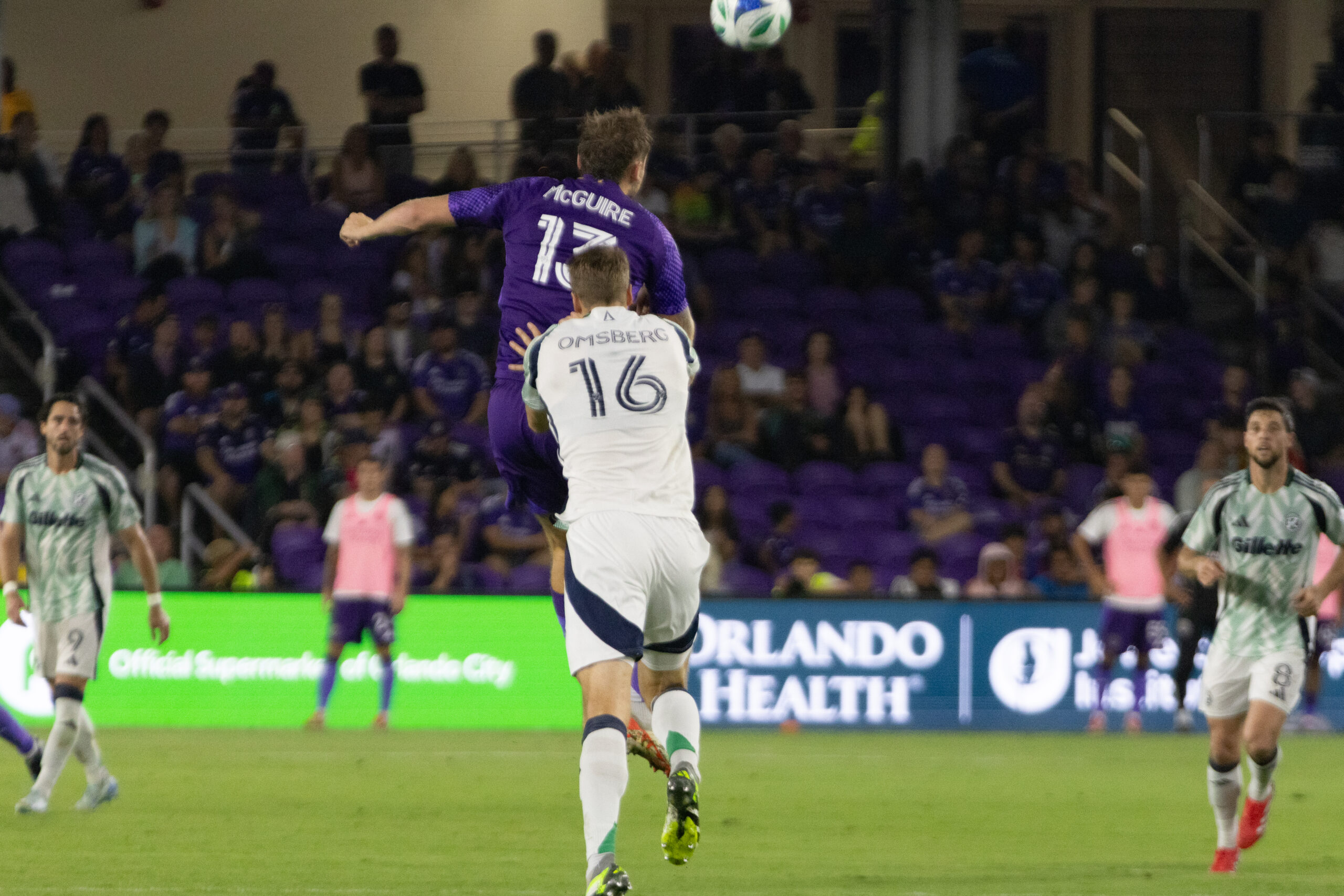
Orlando City announced today that Duncan McGuire has undergone arthroscopic surgery to repair the labrum in his left shoulder. The surgery was performed by Orlando City Chief Medical Officer Dr. Craig Mintzer of the Orlando Health Jewett Orthopedic Institute performed the surgery. Mintzer previously repaired the labrum and rotator cuff in McGuire’s right shoulder back in December for an injury he sustained in Orlando City’s playoff match against Charlotte FC Nov. 9 when he was pulled down by Djibril Diani.
The club’s press release said the 24-year-old striker’s return to play is expected “later this year.” The recovery given for his right shoulder surgery in late 2024 was listed as four to five months, but McGuire was able to come back and play much earlier than expected, appearing for the first time in 2025 in Orlando’s March 15 against the New York Red Bulls — at least a month before the earliest initial projection — however, this time there was no mention of damage to the rotator cuff.
Regardless, the Lions will be without the big target striker for a considerable amount of time.
McGuire had appeared in 12 matches during the regular season in 2025, starting three and scoring one goal and adding an assist. His goal came recently, serving as the game winner in Orlando’s 1-0 home victory over the Portland Timbers on May 24. He was recently listed as questionable on the club’s availability report ahead of the team’s most recent match against the Chicago Fire.
Orlando City drafted McGuire in the first round (No. 6 overall) in the 2023 MLS SuperDraft. After a breakout rookie campaign, in which the Omaha, NE native scored 14 goals, he was courted by several teams in Europe, signing with Blackburn Rovers, only to see the transfer rejected by the English Football League due to an administrative error by the EFL Championship club. After returning to Orlando, McGuire signed a new deal on Aug. 22 to remain a Lion. The new contract runs through 2027 with a club option for 2028. McGuire scored 10 goals and added three assists in 2024. For his Orlando City career, McGuire has appeared in 88 games (46 starts) across all competitions, scoring a total of 28 goals to go along with seven assists.
What It Means for Orlando City
McGuire appeared to be just finding his form, so this injury is unfortunate. The club didn’t put a timeline on McGuire’s recovery this time, but shaving a little off his 2024 recovery estimate, it’s likely that he’ll be out until at least some time in September.
Oscar Pareja has been favoring a 4-4-2 with Luis Muriel and Martin Ojeda up top in recent weeks, with Ramiro Enrique — who is also finding his form — typically spelling one of them when needed. Not having McGuire will affect Pareja’s late-game substitution pattern when Orlando is trailing, as he likes to put Enrique and McGuire both on the field when chasing the game. It also takes the team’s best target striker option out of the lineup when dealing with back lines with lots of height.
McGuire brings size and strength and an ability to occupy center backs that others on the roster can’t replicate. There are times when Enrique’s game is better suited to the opponent, but without McGuire there will be no ability to pivot. With Jack Lynn’s off-season retirement, that leaves the striker pickings mighty slim on the Orlando City bench. That might change Ricardo Moreira’s approach to the MLS Secondary Transfer Window.
Losing a scorer of McGuire’s caliber is always difficult, but this season it could be the difference between finishing high in the table and simply getting into the postseason in a strong Eastern Conference field.
Opinion
Orlando City Must Learn from May’s Mistakes
The Lions can learn some valuable lessons from the three losses they suffered in May.
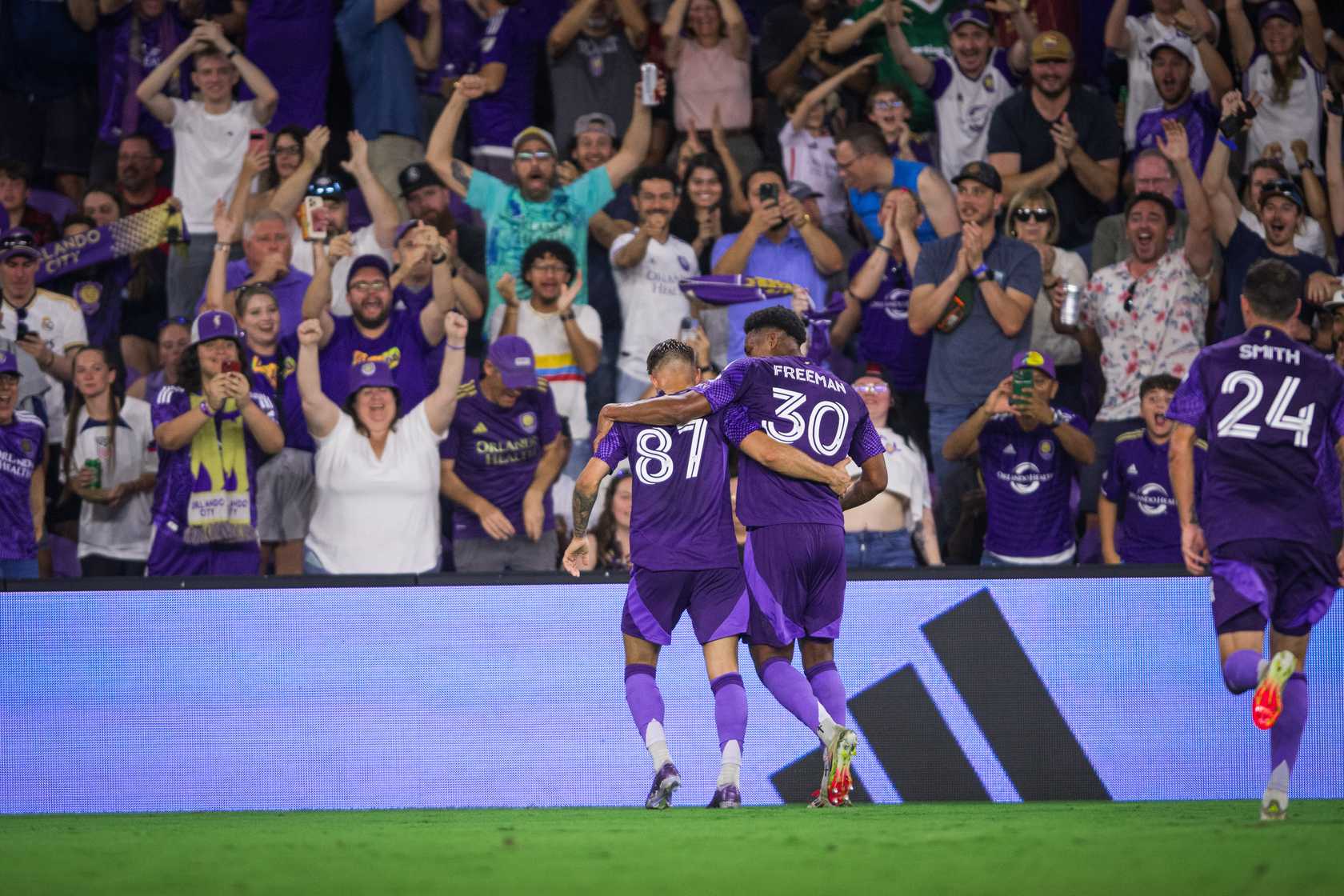
Orlando City hadn’t quite achieved juggernaut status as the Major League Soccer season turned from April to May, but a 12-match unbeaten run in the league is nothing to sniff at, despite there being a healthy number of draws interspersed with the victories. Things turned sour as May drew to a close though, as the Lions lost three of their final four matches of the month and entered a two-week break with a whimper rather than a roar.
Losing is never fun, but in this case those three defeats don’t need to be entirely negative experiences, and there are plenty of lessons to be learned from those three bitter losses that will hold Orlando in good stead if it can implement the proper solutions.
More Squad Rotation
One of the biggest factors in Orlando’s rough finish to May was a lack of squad rotation. Oscar Pareja has always been a coach that likes to find his first-choice XI and stick to it almost religiously. He doesn’t normally tweak his lineups or tactics according to whatever opponent is on the slate, and very much values consistency. In periods of fixture congestion, that tendency can be to Orlando’s detriment, and that was very much the case against both Nashville SC and the Chicago Fire.
After beating Inter Miami 3-0 in an emotional rivalry match on May 18, Pareja made just one change for a U.S. Open Cup match against Nashville SC three days later. Ramiro Enrique slotted in for Luis Muriel up top, but every single other starter from the Miami game also got the nod midweek. With Nashville deploying a heavily rotated lineup mostly filled with backups, the gamble was a simple one: hope that OCSC’s A-team can open up a big first-half lead against Nashville’s B-squad before bringing mass changes in the second half to get guys some rest. Hindsight is, of course, 20/20, but the strategy backfired badly as the Lions lost 3-2. Orlando started well with Marco Pasalic’s 17th-minute strike, but the team faded badly afterwards and gave up a couple of very uncharacteristic goals to lose the game. Lapses in concentration and tired defending cost OCSC the game, and that isn’t something we can normally say about this team.
Then, after losing to Atlanta United 3-2 on May 28 due in no small part to Cesar Araujo’s red card, Pareja made two changes for a match against the Chicago Fire on May 31, with Muriel coming in for Enrique, and the other change being a forced one, as Eduard Atuesta replaced the suspended Araujo. Those starters looked noticeably gassed during the resulting 3-1 loss, and the fatigue manifested itself by players missing chances that would normally be converted or in sloppy, mistake-ridden defending.
May was a packed month with a whopping nine matches in 31 days, and most months won’t be that busy. August is set to be the busiest remaining period of the year with six games in 31 days, although that number could rise higher if the Lions make a run in Leagues Cup. The bottom line is that guys are going to need more rest as the season goes on. If the coaching staff doesn’t trust some of the guys currently available as backups, then they need to dip into the transfer market in one way or another and get some players that they do trust, because if the starting XI gets run ragged during busy periods it’s going to cost Orlando, plain and simple.
Cool Heads Usually Prevail
Orlando City has received three red cards on the season, which is tied for the second-most in the league. Unsurprisingly, the Lions are winless in games in which they’ve had a man sent off, with draws against the New York Red Bulls and CF Montreal and a loss to Atlanta United. The results against the Red Bulls and Atlanta were particularly difficult to swallow, as before going down to 10 men, Orlando had looked on track to get three points in each game.
Araujo’s red card against Atlanta was especially frustrating, as he allowed Mateusz Klich to get under his skin, grabbed him by the throat, and reduced his team to 10 men when OCSC was nursing a 2-1 lead on the road. It was completely unnecessary and was also the sort of thing that Orlando had looked to put in the rearview mirror after keeping its collective composure and not picking up any bookings in the 3-0 road win against Miami, while the Herons picked up four and looked noticeably rattled in the process.
It should go without saying, but the Lions can’t afford to get key players sent off. Six extra points could make a big difference in the standings at the end of the year, and that number could rise even higher if OCSC can’t put its disciplinary issues to rest once and for all.
Focus for the Full 90
There were moments in each of Orlando’s three May losses that the team committed bad defensive lapses or mistakes. Whether it was not playing to the whistle on Nashville’s third goal, Atuesta’s bad turnover against Atlanta, or the Lions collectively allowing Chicago to stroll through midfield to score a third goal, there were plenty of examples of bad breakdowns that were largely absent during the team’s unbeaten run. Can some of that be attributed to tired minds and tired legs? Maybe so — it’s a lot harder to play crisp and focused when the minutes have piled up. Regardless, its something that can’t continue to happen going forward. It’s possible that having more rotation in the squad will help that a lot, but it’s also on the players on the field to stay as mentally sharp as they can when they’re out on the pitch.
Clearly, a recurring theme here is that fresh legs and balanced squad rotation are top of my list of things I want to see change. I’m all for riding the hot hands, but tired legs make for tired minds, and tired minds make mistakes and are easier to rile up. Whether reinforcements come from the bench or an outside source, using more bodies will go a long way towards solving some of the issues that we saw in May’s three losses. All we can do now is wait and see what happens once the team returns from its break. Vamos Orlando!
Lion Links
Lion Links: 6/6/25
Alex Freeman called up for Concacaf Gold Cup, Orlando Pride get ready for the Houston Dash, Orlando City B plays tonight, and more.
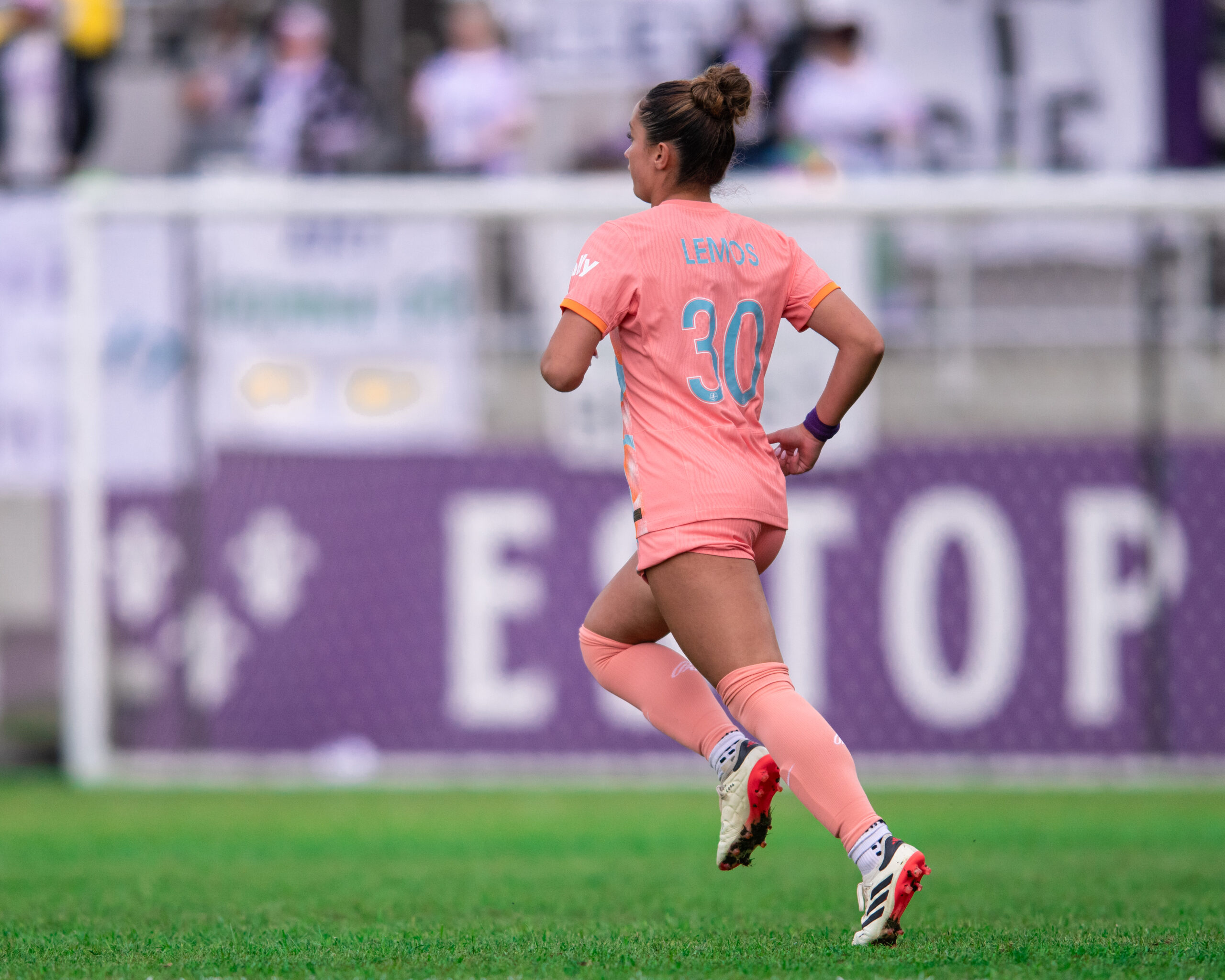
Happy Friday! I’ll be spending this weekend celebrating my birthday by beating my friends at mini golf with no mercy but still hope to catch some soccer over the next few days. I’ve also been on a bit of a movie kick and plan on catching Wes Anderson’s new flick at some point soon. But for now, let’s dive into today’s links!
Alex Freeman Called Up For Gold Cup
Orlando City defender Alex Freeman was officially called up by the United States Men’s National Team for the Concacaf Gold Cup this summer. He’s the only Lion who will be at the tournament and is one of seven uncapped USMNT players on the roster. The 20-year-old could receive more playing time than expected, as right back Sergino Dest is not on the roster so that he can recover over the summer. Left back John Tolkin was added to replace Dest, so Freeman has a real shot at making a claim for the position this month. The U.S. will take on Turkey Saturday in the first of two friendlies before its first Gold Cup match against Trinidad & Tobago on June 15.
Orlando Pride Prepares to Host the Houston Dash
With the international break for women’s soccer over, the Orlando Pride return to action Saturday with a home game against the Houston Dash. It should be a great opportunity for the Pride to ease back into the swing of things against a Dash team that’s only scored 10 goals this season. Pride midfielder Ally Lemos spoke on the benefit of being able to rest heading into this match while maintaining a winning mindset from a 3-1 victory on May 23.
Anna Moorhouse Called Up For 2025 Euros
Orlando Pride goalkeeper Anna Moorhouse was named to England’s final roster for the 2025 UEFA European Women’s Championship. She’s one of three goalkeepers on the squad following Mary Earp’s surprise retirement from international soccer, and she will likely compete with fellow uncapped player Khiara Keating for the backup position behind Hannah Hampton. Moorhouse has started in every game for the Pride this season and was an NWSL Goalkeeper of the Year finalist for her record-breaking season last year. England’s Euro run will begin July 5 against France before other group matches against the Netherlands and Wales.
Orlando City B Takes On Huntsville City FC
The Young Lions are riding high after a 2-1 win over Chattanooga FC and will take that momentum into tonight’s road match against Huntsville City FC. Midfielder Noah Levis scored his first career goal in that home win, with Justin Hylton providing the assist in his OCB debut. Orlando’s offense has been hot and cold this season but has a variety of attacking talent that can create chances in different ways. The Young Lions have only won once on the road, but a win tonight would lift them to third in the Eastern Conference.
Free Kicks
- FIFA Club World Cup action is coming to the City Beautiful this month and Orlando City legend Kaká spoke on how it’s nice for Orlando to host games.
- San Diego Wave Head Coach Jonas Eidevall was named NWSL Coach of the Month. The Wave were undefeated in May, winning three of their four matches to climb to second in the league standings.
- The NWSL will allow intraleague loans for all teams, with the players needing to consent to the move in order for it to happen. Denver and Boston’s expansion teams will have access to potentially over $1 million in Allocation Money starting on July 1 to build their rosters before the 2026 season.
- Atletico Madrid is reportedly close to signing American midfielder Johnny Cardoso from Real Betis.
- South Korea, Uzbekistan, and Jordan all qualified for the 2026 World Cup, while China was eliminated from contention. Australia beat Japan 1-0 and will qualify so long as it doesn’t lose heavily to Saudi Arabia on June 10.
- Spain beat France 5-4 in a wild game to reach the UEFA Nations League final against Portugal on Sunday. Lamine Yamal continues to take the world by storm, but a late rally by France nearly completed a comeback.
That’s all I have for you this time around. I hope you all have a fantastic Friday and rest of your weekend!
-
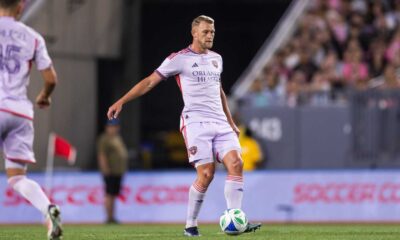
 Orlando City2 weeks ago
Orlando City2 weeks agoOrlando City vs. Portland Timbers: Preview, How to Watch, TV Info, Live Stream, Lineups, Match Thread, and More
-
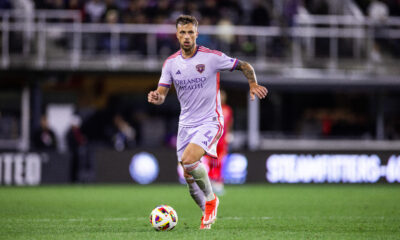
 Lion Links1 week ago
Lion Links1 week agoLion Links: 5/30/25
-
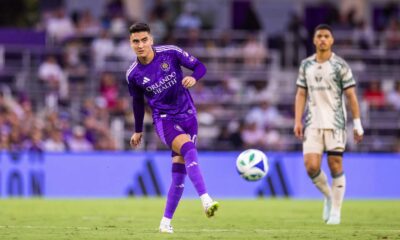
 Orlando City2 weeks ago
Orlando City2 weeks agoOrlando City vs. Portland Timbers: Final Score 1-0 as Lions Tie Club-Record 12-Game Unbeaten Streak
-
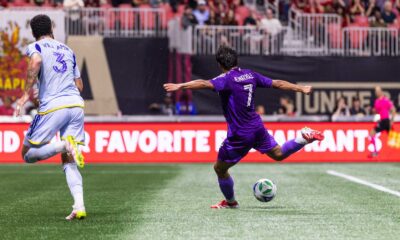
 Orlando City1 week ago
Orlando City1 week agoOrlando City vs. Atlanta United: Final Score 3-2 as Late Araujo Red Card Turns Orlando Lead into a Loss
-
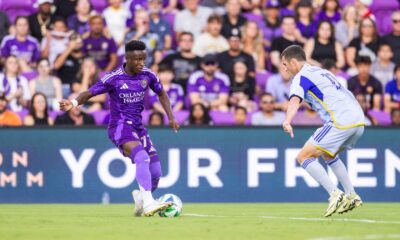
 Orlando City1 week ago
Orlando City1 week agoOrlando City vs. Atlanta United: Preview, How to Watch, TV Info, Live Stream, Lineups, Match Thread, and More
-
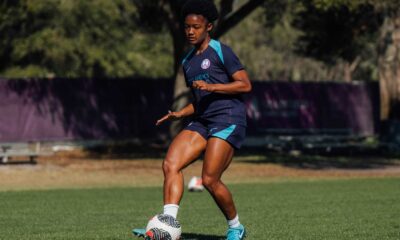
 Orlando Pride1 week ago
Orlando Pride1 week agoOrlando Pride Sign Forward Simone Jackson Through 2028
-
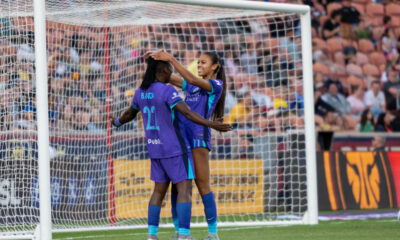
 Orlando Pride2 weeks ago
Orlando Pride2 weeks agoOrlando Pride vs. Utah Royals: Final Score 3-1 as Pride Win Behind Barbra Banda Hat Trick
-
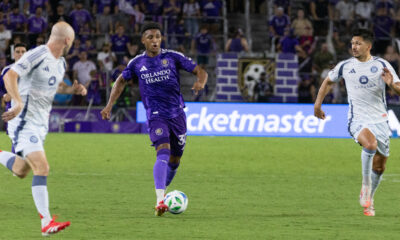
 Orlando City7 days ago
Orlando City7 days agoOrlando City vs. Chicago Fire: Final Score 3-1 as Dreadful Defending Dooms Lions


